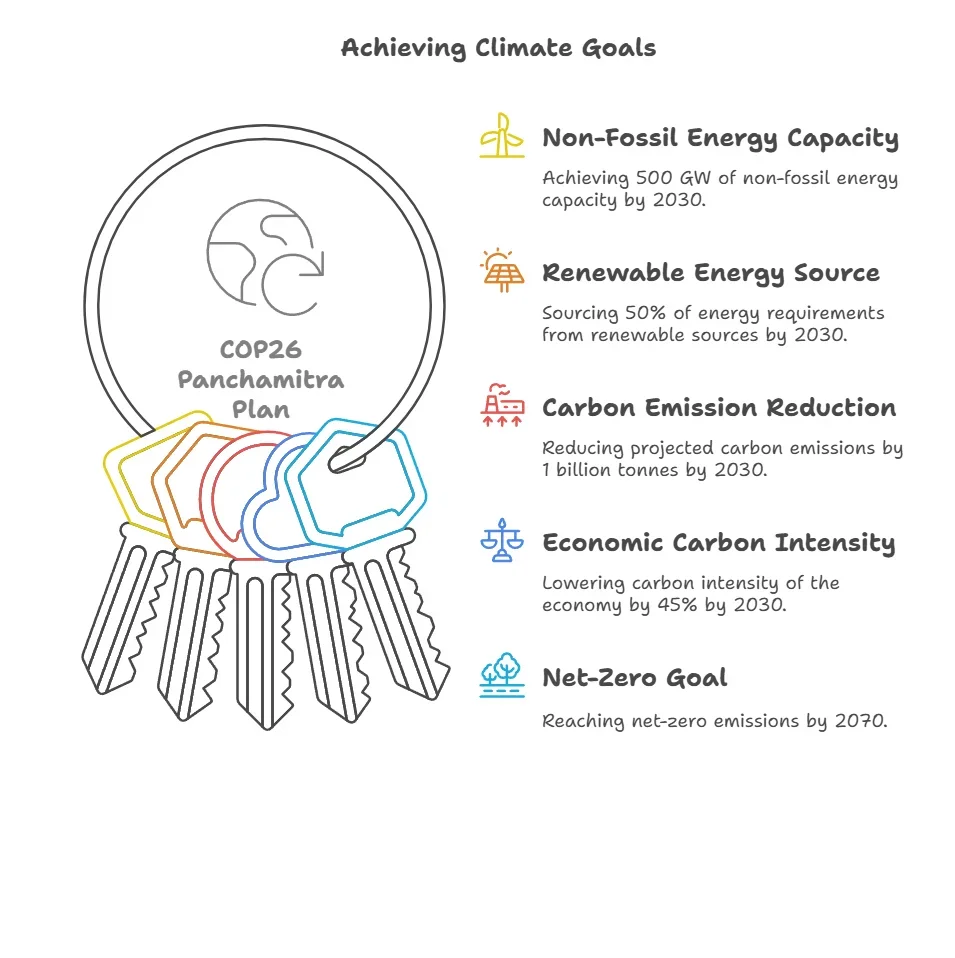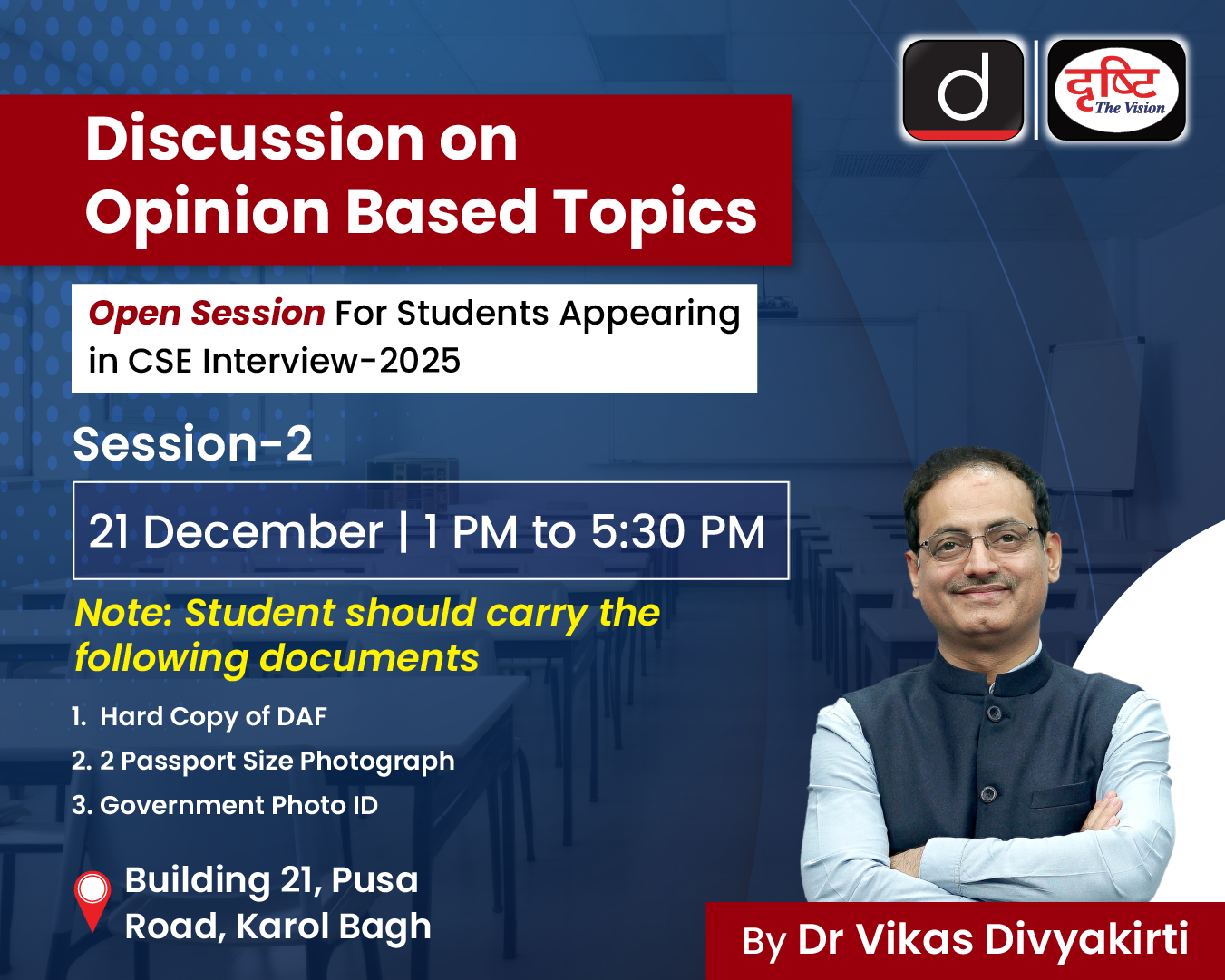Facts for UPSC Mains
India-Australia Clean Energy Partnership
- 17 Oct 2025
- 7 min read
Why in News?
Australia is engaging with India at a crucial time as both nations aim to achieve ambitious renewable energy goals while reducing reliance on China for critical materials amid global supply chain vulnerabilities.
What is the Need to Scale Up Australia-India Clean Energy Partnership?
- Climate Change in the Indo-Pacific Region: The Indo-Pacific faces grave climate risks, averaging 10 climate disasters per month (1970–2022), with up to 89 million displaced and 80% of the population affected by 2050.
- Overdependence on China: China dominates critical materials, refining over 90% of rare earth elements and producing 80% of global solar modules.
- Renewable Energy Partnership (REP): Launched in 2024, REP outlines cooperation across eight areas—solar PV technology, green hydrogen, energy storage, solar supply chains, circular economy in renewables, two-way investment, capacity building, and other shared priorities.
- It also introduces a Track 1.5 Dialogue to connect policymakers, industry, and research institutions for practical collaboration.
- Clean Energy Supply Chain: Australia provides critical minerals and regulatory stability for co-investment in refining and processing, while India offers scale, a skilled workforce, and market demand for solar, storage, and hydrogen backed by Skill India and Production Linked Initiative (PLI) schemes.
- Together, they can create a resilient, regionally anchored clean energy ecosystem.
- Shared Climate Ambitions: India targets 500 GW of non-fossil capacity by 2030, including 280 GW from solar, while Australia aims for a 62–70% emission reduction by 2035, aligned with its net-zero goals.
What are India's Strategic Global Partnerships for Clean Energy Transition?
- India–EU Clean Energy and Climate Partnership (CECP): Established in 2016, this partnership supports joint projects in offshore wind, solar parks, smart grids, energy storage, biofuels, green hydrogen, and efficiency in buildings.
- US-India Strategic Clean Energy Partnership (SCEP): Focuses on advancing clean energy supply chain, research and development, deployment of solar, wind, batteries, energy grid systems, and clean-tech manufacturing.
- Green Fuels Alliance India (GFAI) with Denmark: Denmark launched GFAI to strengthen cooperation on sustainable energy solutions and advance the shared goal of carbon neutrality, focusing on green fuels like green hydrogen.
- Global Biofuels Alliance: It was launched in 2023 at the G20 Summit in New Delhi by India and leaders from the USA, Brazil, Italy, Argentina, Singapore, Bangladesh, Mauritius, and the UAE to promote sustainable biofuels.
Renewable Energy in India
- Renewable Energy Capacity: As of March 2025, the total renewable energy (RE) capacity has reached 220.10 GW, up from 198.75 GW the previous year.
- Sectoral Breakdown:
- Solar Energy: The total installed solar capacity now stands at 105.65 GW, with 23.83 GW added in FY 2024–25, making solar the largest contributor to the year’s capacity expansion.
- Wind Energy: The total cumulative installed wind capacity now stands at 50.04 GW, with 4.15 GW of new capacity added in 2024–25.
- Bioenergy: Bioenergy installations reached a total capacity of 11.58 GW, including 0.53 GW from off-grid and waste-to-energy projects.
- Small Hydro Power: Small Hydro Power projects have reached a capacity of 5.10 GW, with an additional 0.44 GW under implementation.
- India’s Panchamitra Plan:
|
Drishti Mains Question: Discuss the significance of the India-Australia Renewable Energy Partnership in addressing climate change and supply chain vulnerabilities. |
Frequently Asked Questions (FAQs)
1. What is the India-Australia Renewable Energy Partnership (REP)?
REP is a bilateral initiative launched in 2024 focusing on solar PV, green hydrogen, energy storage, and capacity building to strengthen clean energy collaboration.
2. What is the status of renewable energy capacity in India?
Total capacity reached 220.10 GW, with solar at 105.65 GW, wind at 50.04 GW, bioenergy at 11.58 GW, and small hydro at 5.10 GW.
3. Why is overdependence on China a challenge for India and Australia?
China refines over 90% of rare earth elements and produces 80% of global solar modules, creating risks in EV, wind, and solar sectors for both countries.
UPSC Civil Services Examination, Previous Year Questions (PYQs)
Prelims
Q. Which one of the following is the purpose of ‘UDAY’, a scheme of the Government? (2016)
(a) Providing technical and financial assistance to start-up entrepreneurs in the field of renewable sources of energy
(b) Providing electricity to every household in the country by 2018
(c) Replacing the coal-based power plants with natural gas, nuclear, solar, wind and tidal power plants over a period of time
(d) Providing for financial turnaround and revival of power distribution companies
Ans: (d)
Mains
Q. “Access to affordable, reliable, sustainable and modern energy is the sine qua non to achieve Sustainable Development Goals (SDGs)”.Comment on the progress made in India in this regard. (2018)
Q. Write a note on India’s green energy corridor to alleviate the problem of conventional energy. (2013)








